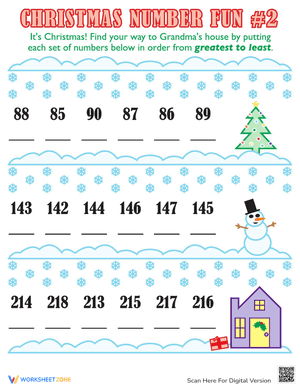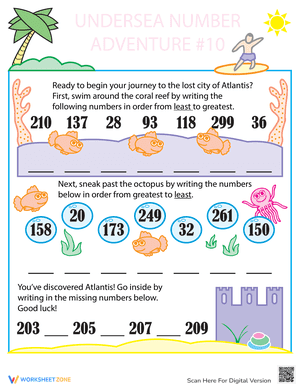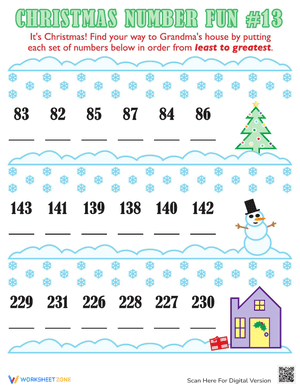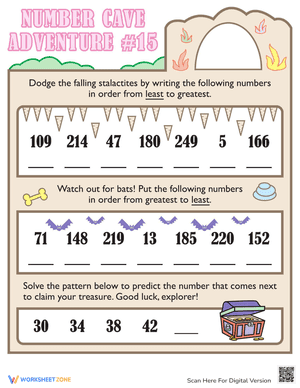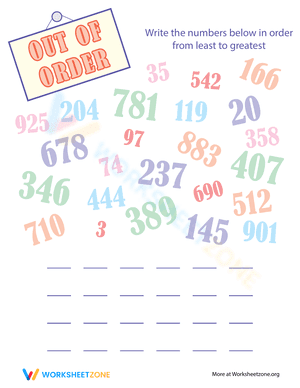These fun Ascending and descending order worksheets were designed to help children become more familiar with ascending and descending order while also looking for changes in number patterns.
The three question sheets are differentiated to ensure that this activity is appropriate for all of your children.
To finish this activity, children must read a list of ascending or descending numbers and circle the area where a number is missing in order to complete the pattern.
In the descending numbers 7, 6, 4, 3, and 2, for example, the number 5 is missing, so a circle is drawn between the numbers 6 and 4.
To make marking a little easier, each worksheet includes handy answer sheets for you to refer to.
Why not give your children an extra challenge by having them write some strings of numbers in ascending and descending order? Once they've completed this activity, they can do this independently on the back of the page. For some physical learning, they could try arranging objects in ascending or descending order.
What does the phrase "ascending and descending order" mean?
Although they are sometimes used interchangeably, ascending and descending order are two distinct concepts. A group of numbers cannot be both ascending and descending at the same time.
Ascending order indicates that the numbers are increasing or becoming larger, beginning with the smallest. They climb - remember that when we ascend a hill, we are climbing up it.
Here's an example of ascending numbers:
1, 2, 3, 4, 5, 6, 7, 8, 9, 10.
Descending order indicates that the numbers are decreasing or becoming smaller, beginning with the largest. They descend; consider how a plane descending indicates that it is about to land after a flight.
This is an example of descending numbers:
10, 9, 8, 7, 6, 5, 4, 3, 2, 1.
You can explore more related Math worksheets for other topics on our WorksheetZone website!
